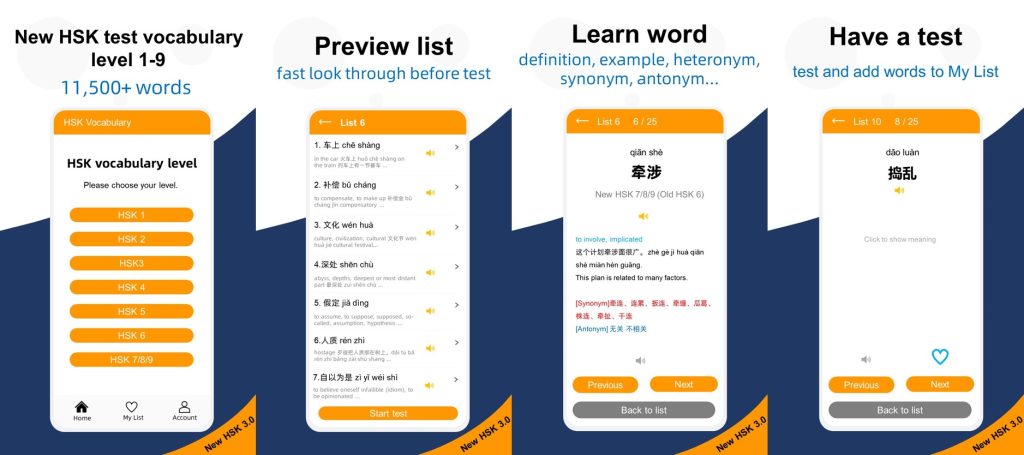In order to make the Chinese Level Exam (HSK) better serve Chinese learners, experts in Chinese and foreign Chinese teaching, linguistics, psychology, and education measurement are organized in the Chinese National Han Office to fully investigate and understand the actual situation of overseas Chinese teaching. On the basis of absorbing the advantages of the original HSK, drawing on the latest results of international language test research in recent years, and launching the new Chinese level test (HSK).
1. Examination structure
The new HSK is a standardized test of international Chinese capabilities. Candidates who focus on the non -first language of Chinese language are used to use Chinese in life, study, and work. The new HSK is divided into two parts: written and oral test. Written tests and oral tests are independent. Written tests include HSK (level first), HSK (level 2), HSK (level 3), HSK (level 4), HSK (level 5) and HSK (level 6); oral test includes HSK (primary), HSK (intermediate), and HSK (Advanced), the oral test uses a recording form.
2. Exam level
The corresponding relationship between the new HSK levels and the “International Chinese Capability Standard” and the “European Language Reference Framework (CEF)” is shown in the table as follows:
| New HSK | Vocabulary | International Chinese Capability Standard | European Language Framework (CEF) |
| HSK (Level 6) | 5000 and above | Five -level | C2 |
| HSK (Level 5) | 2500 | C1 | |
| HSK (level 4) | 1200 | Four -level | B2 |
| HSK (Level 3) | 600 | Three -level | B1 |
| HSK (level 2) | 300 | Secondary level | A2 |
| HSK (level first) | 150 | First -level | A1 |
Candidates through HSK (level first) can understand and use some very simple Chinese words and sentences to meet specific communication needs and have the ability to further learn Chinese.
Candidates through HSK (secondary) can use Chinese -familiar daily topics to make simple and direct communication to reach the level of primary Chinese.
Candidates through HSK (third -level) can use Chinese to complete the basic communication tasks of life, study, and work. When traveling in China, you can deal with most of the communication tasks encountered.
Candidates through HSK (level 4) can use Chinese to talk about topics in the widespread field, and to communicate with Chinese as a mother tongue in fluentity.
Candidates through HSK (level 5) can read Chinese newspapers and magazines, admire Chinese film and television programs, and give a more complete speech in Chinese.
Candidates through HSK (level 6) can easily understand Chinese information hear or read, and express their opinions fluently in Chinese in verbal or written in Chinese.
3. Exam Principles
The new HSK follows the principle of “combination of teaching examinations”. The examination design is closely integrated with the current international Chinese teaching status and the use of textbooks. The purpose is to “promote teaching with examinations” and “to promote learning.”
The new HSK focuses on the objective and accuracy of the evaluation, and attaches great importance to the development of the Chinese application ability of candidates.
The new HSK sets a clear test goal, which is convenient for candidates to plan and effectively improve Chinese application capabilities.
4. test use
The new HSK continues the positioning of the original HSK general (or universal) Chinese ability test, and is for adult Chinese learners. Its achievements can meet diversified demand:
- Provide a reference for enrollment, lectures, curriculum removal, and credits for colleges and universities.
- Provide reference for employment, training, and promotion staff.
- Provide a reference for Chinese learners to understand and improve their ability to apply Chinese application.
- Provide a reference basis for the effectiveness of teaching or training for relevant Chinese teaching units and training institutions.
5. Report report
Within 3 weeks after the exam, candidates will receive a new HSK results report issued by the Hanban.
about

